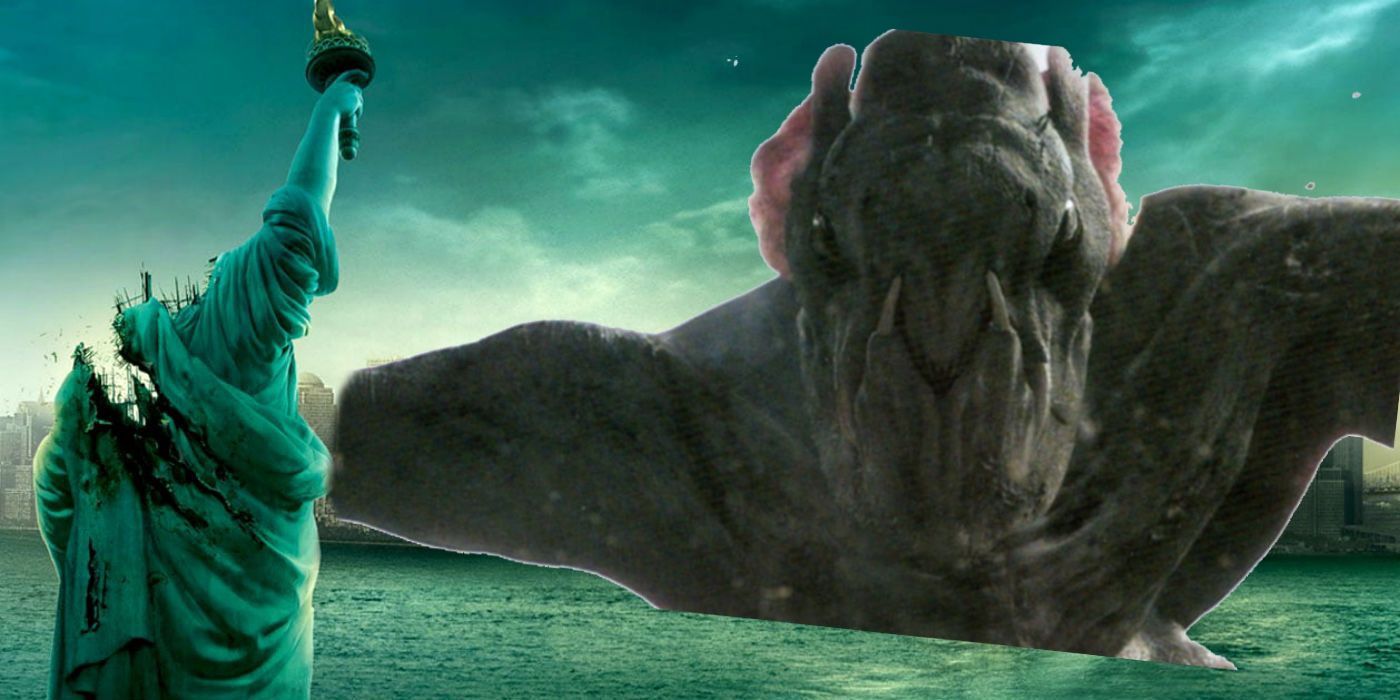After an absence from 10 Cloverfield Lane, the massive kaiju returned to the Cloverfield series in The Cloverfield Paradox, albeit in a different, even more monstrous form. Beginning with Cloverfield in 2008, the Cloververse has so far connected three otherwise unrelated mid-budget genre films (as well as a tie-in manga) under the umbrella of a shared universe undergoing a kaiju apocalypse.
The discrepancies in genre between the three Cloverfield films up to this point are one of the series defining features, allowing it to play around in different modes of science fiction. To that end, only the first was really a proper monster movie in the kaiju tradition. 10 Cloverfield Lane, while existing under the threat of alleged extraterrestrial forces, operates more as a psychological thriller, pitting its heroine primarily against another human being without showing the creature at all. The Cloverfield Paradox also has locked-room elements, but it engages with loftier sci-fi concepts than its predecessors.
Despite only appearing intermittently, the creature is one of the series's most iconic elements, so charting its development is an important part of understanding the development of the franchise as a whole. When it appears in the first Cloverfield, the monster, known endearingly as "Clover", was roughly 25 stories tall, measurable against the New York City skyline. While more than sizable, this is dwarfed by the version that is seen in the final moments of The Cloverfield Paradox, which towered above the clouds. Although they appeared to be very similar, it's not entirely clear if these two are the same creature.
In observing the change between the two films, it's important to note that the monster in the first Cloverfield was envisioned by the filmmakers as an infant, although it was not mentioned on screen. This explains both its erratic behavior and its smaller size in relation to what is later seen, which it may one day grow into. Its age also raises the question of whether the menacing parasites that fell off its body would be absent from an older creature or present in an even more severe form, maintaining the street-level threat. On a macro level, it's difficult to get a read on how many monsters there are in the franchise in general, especially after the parallel realities introduced in The Cloverfield Paradox.
Material outside of the films suggests that the initial monster in Cloverfield emerged from the ocean after having lain dormant for many years, but the reality-melding effects of the Paradox could expand upon this: even in the unlikely scenario that there was only one sleeping under the sea, many others could arrive from alternate dimensions. If this is the case, it could explain the difference in scale and allow for the proliferation of other, even more drastic variations that have faced different environmental stressors and feel even less terrestrial. Although creature did change noticeably from Cloverfield to The Cloverfield Paradox, the possibility for even greater deviation is significant, because the evolution of the central kaiju is so crucial to the worldbuilding of the series and understanding the direction it may take in the future.


